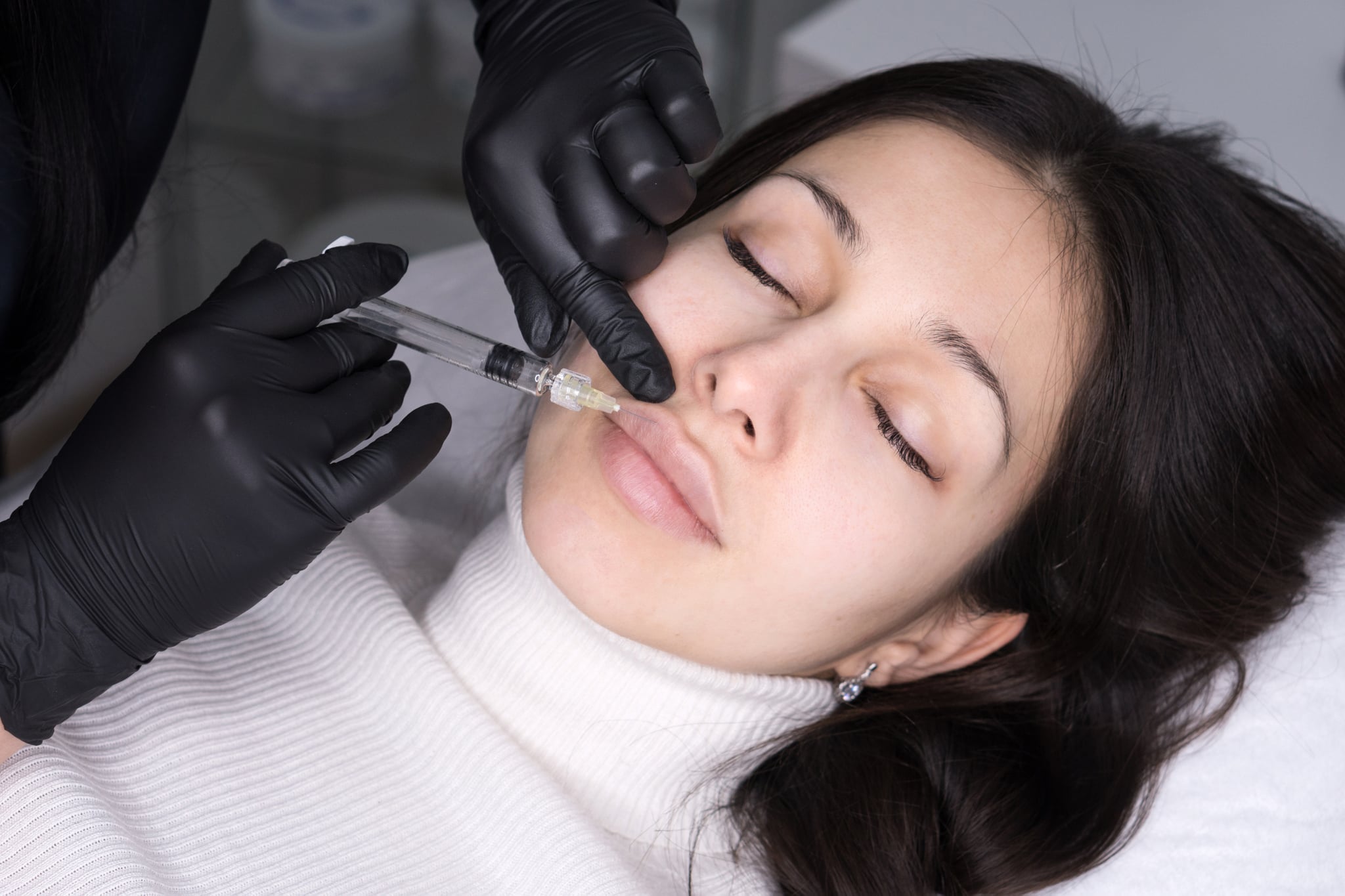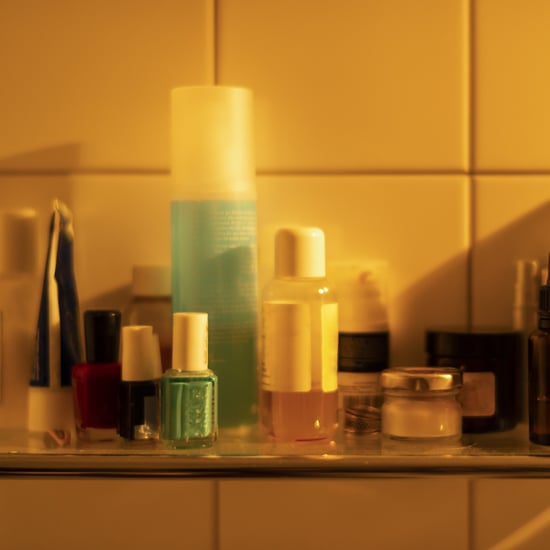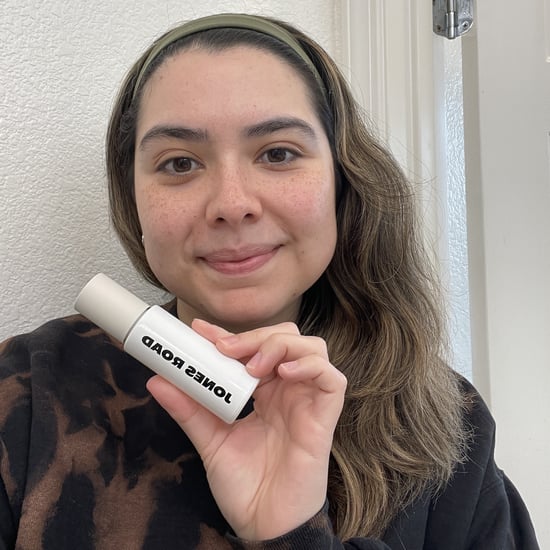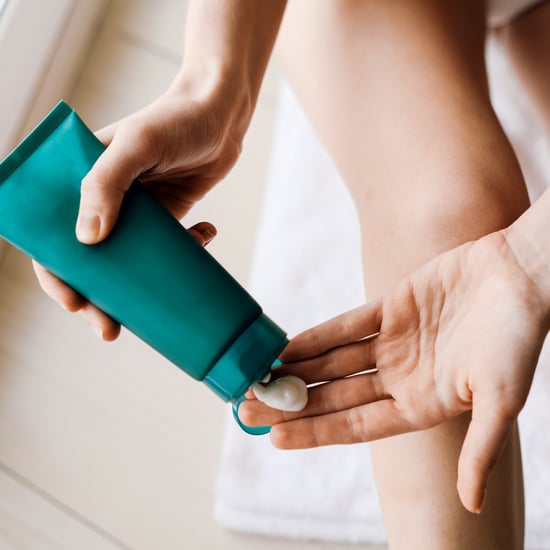Dissolving Filler: Is It Painful, How Much Does It Cost
All of Your Questions About Dissolving Filler, Answered

Deciding to get dermal fillers — be it cheek filler, chin filler, lip filler, or undereye filler — is a big decision. Like all cosmetic procedures, you should heavily research practitioners and thoughtfully consider your choice before you go under the needle. Though it's pretty straightforward and low risk (as long as you're doing it under the guidance of a certified medical professional) sometimes things don't go as planned. Maybe your filler didn't turn out how you expected, it migrated, or you've found yourself a little overfilled. Whatever the reason, dissolving the filler is an option you can explore.
"More and more patients are getting fillers dissolved as a result of years of being overfilled [and] thereby losing definition and contour, looking too round or too full," Azza Halim, MD, a board-certified multi-specialist physician and anesthesiologist, tells POPSUGAR. Recently, celebrities with filler such as Courteney Cox and Kylie Jenner have all opened up about getting it dissolved, leading many people to wonder if it's the right option for them, too.
That said, you probably have some questions: does filler dissolver have side effects? How much does dissolving filler cost? Does dissolving filler hurt? Luckily, we have some answers for you. Keep reading to learn everything you need to know about dissolving fillers.
Most Common Types of Filler
We have a full guide on the different types of fillers out there that you can read, but let's go over a few of the most common options out there. "Dermal fillers are wonderful adjunct aesthetic therapies for those desiring more volume or contouring," Dr. Halim says. There are a few different types of dermal fillers, including hyaluronic acid (this being the most common type, which you'll find from brands like Restylane, Juvederm, and others), calcium hydroxylapatite (from Radiesse), and poly-l-lactic acid (from Sculptra).
How to Dissolve Filler With Hyaluronidase
Choosing to get your filler dissolved is personal, and there are a handful of reasons the option might cross your mind. When you do arrive at that decision, you'll need to pay a visit to a medical professional to get it done.
"Pure hyaluronic acid fillers can be dissolved with hyaluronidase," says Dr. Halim. It is an enzyme that breaks down pure hyaluronic acid fillers in the event of a complication, as well as when one is overfilled or does not have the ideal aesthetic result." It works by helping your body absorb the filler.
The process of dissolving filler with hyaluronidase is straightforward. "When correcting an area that is overfilled, the hyaluronidase is injected into the area, as well as the surrounding area," Dr. Halim.
Once injected with hyaluronidase, the enzyme starts working immediately to disband the existing dermal filler and continues to work for up to 48 hours. After that, the added volume should be gone and you'll be back to your normal state in a matter of two weeks.
How to Dissolve Filler Naturally Without Hyaluronidase
If you want to dissolve your dermal filler without going to the doctor and getting an injection of hyaluronidase, your only option is to wait it out. Hyaluronic acid filler can last anywhere from six to 12 months, but it's only temporary. After that, your body breaks down the filler naturally, which is when you can either get it redone or take a break from it altogether.
Does Dissolving Filler Hurt?
"Does it hurt?" is the age-old question when talking about cosmetic and plastic procedures, and it's a hard one to answer. Pain tolerance is subjective, but Dr. Halim says most people find it hurts less than or is comparable to the process of getting filler done in the first place. That said, many people have shared their filler dissolving experiences on TikTok and Instagram and have stated that it can in fact be painful. Ultimately, it's worth bringing up this concern to your doctor and they can address options to help ease discomfort.
Filler Dissolver Side Effects
The side effects of dissolving filler with hyaluronidase are pretty similar to those of getting filler done in the first place. This includes bruising, swelling, and in some cases, allergic reactions. "Some think that dissolving filler can affect surrounding tissue or skin quality, but that is not the case." Our bodies naturally produce a type of hyaluronidase, which causes a natural loss of hyaluronic acid in our skin with age. The hyaluronidase used to dissolve dermal fillers is a "synthetic enzyme that acts on the dermal fillers, but not on our own tissue."
Dissolving Filler Before and After
How Much Does It Cost to Dissolve Filler?
Just as the cost of getting filler done varies, so does the cost to dissolve fillers. At the time of publishing, the reported average cost comes in at £250, but that's largely determined by factors like the individual medical practice.
Getting Filler Redone After Dissolving It
If you want to give filler another go after dissolving it, consult with your doctor. "I always have my patients wait seven to 10 days for any bruising or swelling to resolve before re-injecting," says Dr. Halim. This allows your doctor to assess the situation and gives your face time to heal. Ideally, though, you should wait two weeks, which is the maximum amount of time that it can take for the enzyme-dissolve effects to subside.






